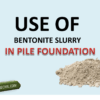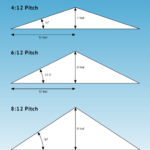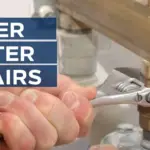We intentionally entrain microscopic air bubbles in concrete to enhance its durability against freeze and thaw. Air entraining agent or pore-forming agents are admixtures that are used to incorporate air into the concrete mix. They enhance the workability of concrete and improve resistance against salt scaling or freeze and thawing.
Definition
In normal concrete, the air bubbles are still there but they are just 1 to 3% by volume. So, to increase their percentage, an amount of AEA is added in the concrete. The addition of such an admixture in the concrete is referred to as air entrainment.
So, if you’re working on a concrete project where it is exposed to free-thaw cycle and you need to enhance resistance of concrete against deicer chemicals, you need to use air entraining agent. Air entraining agents are added at an amount of 0.001 to 0.1 % by weight of cement. However, this amount depends on the mix design, type of material, and mixing condition.
Also Read: Difference between Segregation and Bleeding in Concrete
The most common of all air entraining agent is a surfactant. It is a surface active substance and is a type of chemical that includes a detergent. So, when they are added, air bubbles are produced during mixing or easy flowing concrete. These bubbles survive till the concrete gets hardened.
Don’t Forget to Read this article: Learn more about advantages of air-entrainment and its impact on concrete in this article here: Advantages of air-entrained concrete
AEA decreases the surface tension of fresh concrete mixture and thus it increases the workability of fresh concrete and reduces segregation and/or bleeding.
What are some common Air Entraining Agents
Following are some of the common Air entraining agents:
- surface-active substances – organic
- substances that produce gas pores or bubbles
- solid substances that are inorganic and are granulated in foam form from polymers
- biodegradable polymers
It is very important to note that the air you’ll incorporate into the concrete mix would require additional amount of cement to compensate for the strength that would be lost as a result.
Anyhow, because of enhanced workability, you may adjust or lower the water cement ratio needed to give a specific slump. All air-entraining agents should be in accordance with ASTM C233.
Purpose of using air entraining agent
There are two primary reasons of using air entraining agents in concrete:
- To increase durability – Air entrainment enhances the resistance of concrete against freeze and thaw moreover it avoids segregation.
- To increase workability – air bubbles make concrete a good slump which is good for workability.
Impact of freeze and thaw on concrete
Now to understand the benefit of such an admixture, you need to know the phenomenon of freeze and thaw. This is a cyclic phenomenon in which the water molecules in the concrete freeze and expand which is beyond the volume constraints of concrete. Due to this expansion of water the concrete removing and damages.








![Engineering Communication by Knisely [PDF] [FREE DOWNLOAD]](https://definecivil.com/wp-content/uploads/2021/05/Editorial-Markup-Stop-Start-Continue-Brainstorm-Presentation-100x100.jpg)









